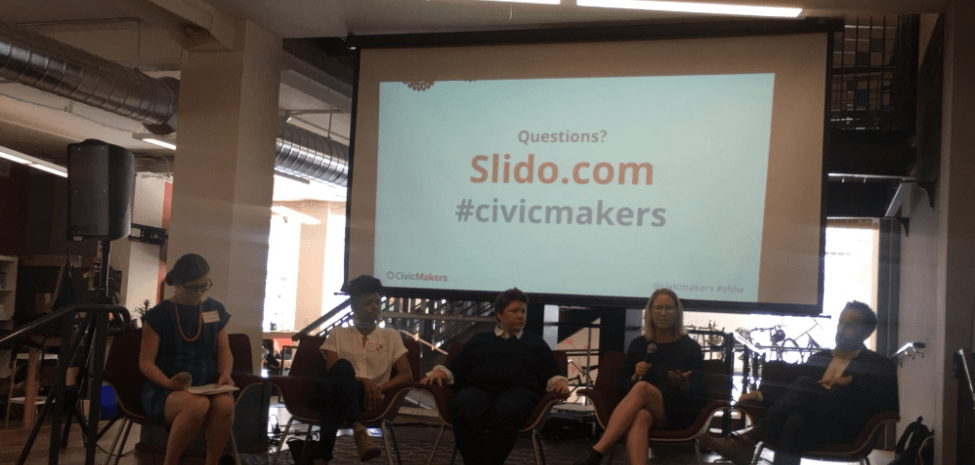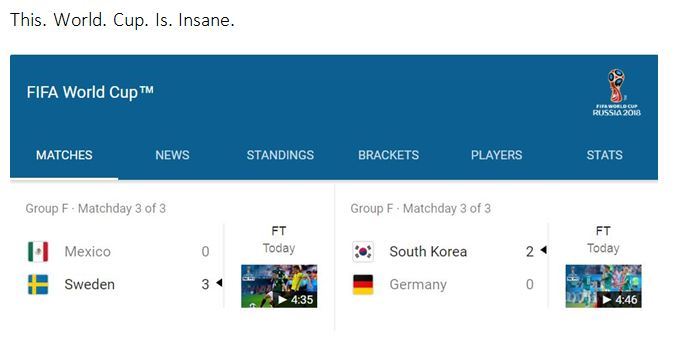
Right Now w/ Rebecca Woodbury (LinkedIn / Twitter)
What I’m Listening to – WORLD CUP
What I’m Watching – WORLD CUP
What I’m Doing – WORLD CUP
What I’m Thinking About – WORLD CUP

A couple of weeks ago, I had the privilege of speaking on a panel called Human-Centered Public Service Design & How We Get There for SF Design Week. It was awesome. My fellow panelists were way cool and I learned so much from them: Brooke Staton, Co-Founder of Reflex Design Collective; Peter Jackson, IDEO’s Public Sector Portfolio Director; Carrie Bishop, San Francisco’s Chief Digital Services Officer; and moderated by Cristelle Blackford, CivicMakers’ Chief Engagement Officer.
Cristelle posed some great questions about incorporating human-centered design in public service, so I thought I’d share my responses with y’all via the Morning Buzz.
Q: You have a slightly different background from our other panelists in that you don’t have a design or tech background, and yet you’ve been instrumental in San Rafael’s efforts to digitize City services (including a new website, resident engagement platform, and CRM), and you hired CivicMakers to teach all 400 San Rafael employees HCD. What convinced you that these were important efforts?
For me, I’m continually inspired by the impact applying human-centered design to government has on outcomes. A lot of government work can be frustrating when so much hard work goes into something that produces such mediocre outcomes. If your view is that government exists to serve people and to help people, then there’s really nothing that makes more sense than applying human-centered design to government.
Our City Manager’s vision for the organization is to build public trust in government by improving our service delivery. He wants us to meet the public’s rising expectations around services – in a world where Amazon drones drop packages off in under 30 minutes. Another thing about our City Manager is that his definition of public service is largely shaped by his experience in the Peace Corps. Which, by the way, is like, totally, human-centered design.
The great thing about explaining the concepts of human-centered design to passionate government employees, is that they actually get it quite quickly. For most, it’s just a fancy name for a concept that is really familiar. It names the thing they’ve always practiced – which is putting the people they serve first. It’s a framework that helps them achieve what they want to, which is a positive outcome for the community.
The vast majority of government workers don’t enjoy the fact that the services they deliver produce mediocre outcomes. They want awesomeness. And human-centered design gives them the tools to produce that awesome:
- It helps them conduct the truly meaningful outreach that actually produces a better end result.
- It helps the launch of something new go a little smoother.
- It reduces the time spent fixing user errors, calling people back who can’t figure out how to fill out the form, having to leave a message and wait for them to call you back, and then the purgatory of phone tag.
I believe the principles of human-centered design translate to all levels of government and by providing government employees with these tools, you are helping them put a framework around a concept that comes quite naturally.
Q: How do we convince more public sector decision makers that agile, iterative, “fail first” approaches lead to better outcomes and can actually save money over time?
You have to prove it. You have to show that actually the status quo isn’t safe. In government, we want to be good stewards of public money and trust. Well, to really be risk averse, you actually have to challenge the status quo. The status quo, in many cases, is the risky option!
We need to start calling a spade a spade and admit that services are not producing the desired outcomes. And the way we work means that a lot of people actually have miserable jobs. Get into the trenches and see what people do every day because of the tools you tell them they have to use to do their jobs.
You have to find these examples of agile, iterative approaches and tell that story in a way that is approachable, in a way that people can relate it to their work.
Focus on outcomes. Most people are in public service because they want their career to have purpose – this means producing good outcomes for the community they serve. Show them how they can do this through agile.
Q: What does human-centered service design in the public sector look like in 10 years? 20 years?
The optimist in me says that more people will chose government as a career because they will not just have found purpose in their job, but they will also enjoy their work and see results.
More people will trust government and will want to participate – so we will see more volunteerism, more civic participation – because of trust as well as ease. And as a result, government will be more reflective of the communities it serves.
One of my concerns is around equity – will disenfranchised communities have access to the public services they deserve or will it just result in the wealthy getting building permits easier and faster. Will all governments benefit, or just certain ones? What about smaller governments?
